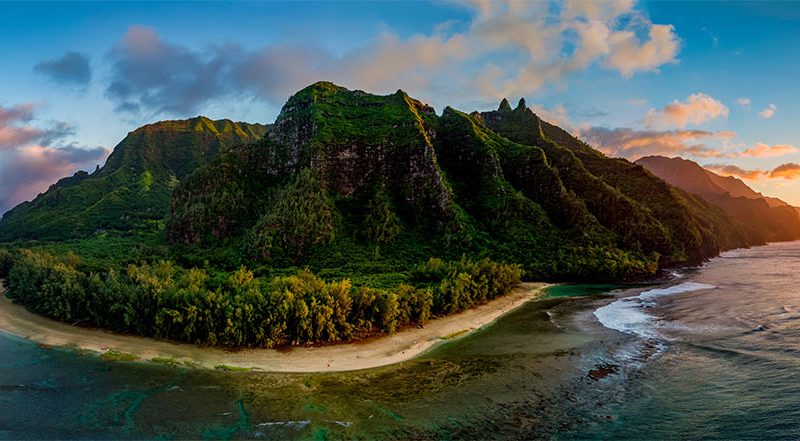Mark Zuckerberg’s $270M Hawaiian Apocalypse Bunker
A new trend is emerging amongst celebrity homes – lavish bunkers built to withstand any imaginable doomsday scenario, from nuclear fallout to zombie invasions. And leading the charge is none other than Mark Zuckerberg, whose $270 million Hawaiian compound featuring multiple mansions and a 5,000 square foot underground shelter shows that for the billionaire class, the end of the world doesn’t have to mean the end of luxury.
The Rise Of Luxury End-Of-Days Shelters
Zuckerberg is far from alone. Underground bunkers, safe rooms, and stylized panic rooms have become almost standard features in the homes of Silicon Valley tech elite and Wall Street titans. From Peter Thiel’s 477-acre New Zealand estate complete with its own private bunker, to hedge fund manager Paul Singer’s gold vault featuring 10-ton blast proof doors, the mega rich are preparing for catastrophe while making sure their lives post-apocalypse are still absurdly comfortable.
Let’s call it the billionaire bunker boom – where savvy luxury builders have tapped into the growing market for lavish end-of-the-world shelters, merging high-security with all the amenities one expects when they have 10 or 11 figures to their name. This new class of residential security fortification fuses elements of super yachts, five star hotels and modern art museums – private cinemas and swimming pools alongside high tech air filtration, emergency escape tunnels, and walls able to withstand military grade weaponry.
Backlash From Local Communities
For citizens of small, Pacific Ocean islands like Hawaii and New Zealand, this apocalypse-chic trend has proved equal parts distasteful and concerning. Many view these sprawling billionaire compounds as insensitive to local land rights and cultural values. After all, who wants Tolkien’s Smaug to set up a bug-out vault for him and his tech bro pals next door?
Still, for the billionaires themselves, it is both shrewd investment and psychological catharsis. They have built great fortunes by controlling and monetizing personal data, privatizing once public goods, and profiting from growing wealth inequality – business models that do not ingratiate one to the masses. With the backlash against billionaires growing and talk of breaking up large technology firms increasing, the underground bunker is as much a concrete manifestation of billionaire anxiety as it is rational preparation for unlikely scenarios.
Take Zuckerberg, whose Hawaiian hideaway is estimated to cost at least $100 million on top of the $170 million paid for the Kauai ranch land. With tunnels linking underground media rooms to sprawling aboveground mansions and treehouse villages, it encapsulates both the whimsical and the paranoid now common in tech billionaire abodes. For critics it symbolizes the Facebook founder’s detachment from reality and willingness to disrupt a small island community while courting powerbrokers with multi-million dollar local investments.
Peter Thiel’s New Zealand Safe Haven
Similar criticisms were lodged against Peter Thiel when documents were leaked showing elaborate plans for his New Zealand estate. With its helicopter pads and burrowing panic rooms said to withstand magnitude 7 earthquakes, locals and activists balked at what they viewed as a climate insensitive tech billionaire attempting to build a part-time kingdom under the guise of apocalyptic preparedness.
Still, for security focused luxury builders and designers, rising geopolitical tensions and climate uncertainty mean demand from ultra high net worth clients for bespoke disaster shelters will only increase. Some companies even specialize explicitly in billionaire bunkers – like Texas based Rising S Company, which constructs fortified underground shelters complete with bowling allies and rock climbing walls for upward of $100 million.
Private Islands As Elite Escape Pods
This end-of-the-world ethos amongst the elite is also driving related celebrity homes trends – like an uptick in interest in private islands as sanctuaries from pandemic and unrest. Some firms now provide turnkey private island ownership, delivering a fully functioning island with resort quality accommodations already built. Prices range from $15 million to over $100 million depending on size and location.
So while critics will argue billionaire bunkers reflect the worst impulses of the super wealthy, true believers will contend they are taking reasonable precautions. And in fact there may be investment wisdom in how the billionaire class approaches disaster preparedness – making sure to protect your fortunes against all potential black swan events while never having to sacrifice creature comforts or lifestyle. Because if there is anything today’s tech billionaires agree on, it is that the end of the world shouldn’t mean scrimping on luxury.
The Ethical Quandaries Of Doomsday Prepper Culture
Ultimately, the rise of lavish apocalypse shelters amongst celebrity homes surfaces important ethical questions society must grapple with. Is it morally appropriate for the ultra wealthy to pour fortunes into building private escape hatches from global catastrophes their own corporations may be exacerbating through activities like intensive data harvesting and accelerated automation? Should communities subsidize disaster readiness for elites already sitting atop unprecedented concentrations of wealth? As we enter a turbulent century defined by deepening inequality and compounded crises, our answers may come sooner than we think.
